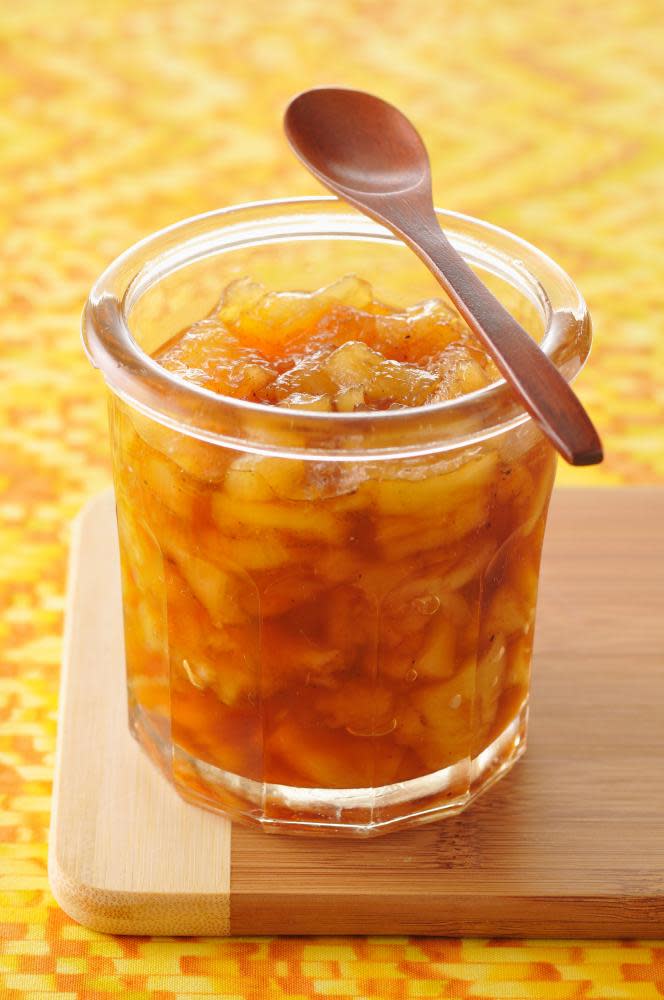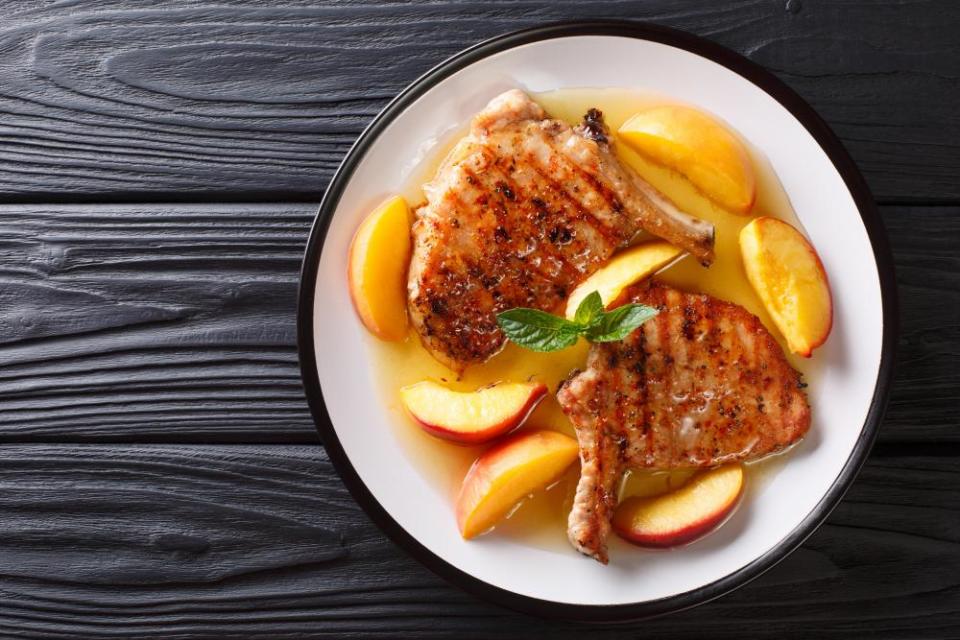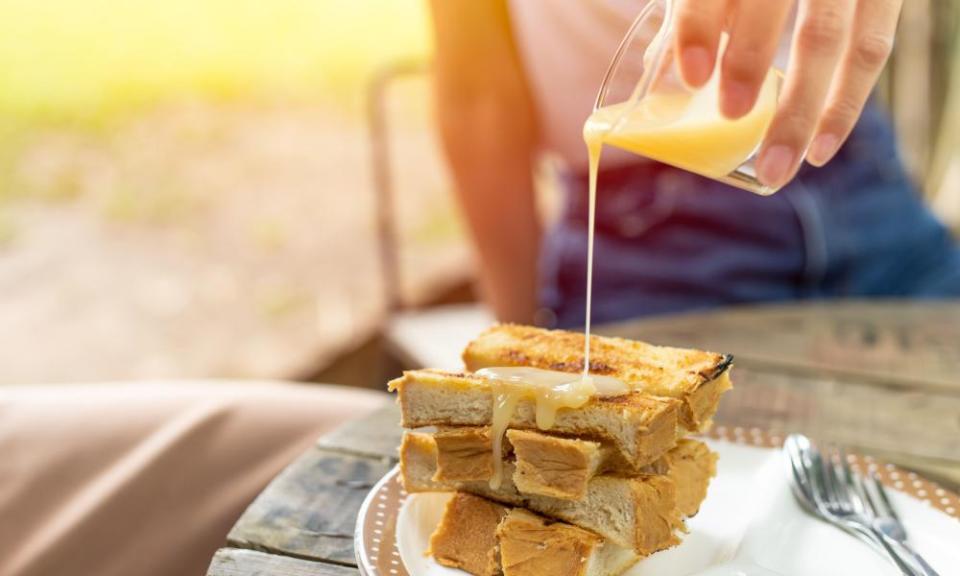Savour the flavour! Chefs on 20 terrific ways to tickle tired tastebuds
Some of us have thrived in the kitchen in the past 18 months, finding it a creative sanctuary. For others, trapped indoors, life on hold, busier than ever but with more meals to cook, it has been easier to fall into a repetitive routine of reliable dishes that, by now, are deeply boring.
The answer to this malaise? Fresh thinking from some of Britain’s best chefs. We asked for their most arresting ideas: revelatory hacks, unexpected flavour combos and daring dishes that will stir the curiosity of even the most jaded home cook.
Strawberry ragu
Alex Rushmer, the chef-owner at Vanderlyle in Cambridge, creates a strawberry ragu with a remarkably meaty, umami flavour, to serve with pasta or crumpets. (It is inspired by Jeremy Fox, a Californian chef nicknamed the “vegetable whisperer”.) To feed four, soften finely diced fennel, white onion, celery and carrot (125g each) in 240ml olive oil with 135g pine nuts for 45 to 60 minutes. Add 1kg roughly chopped strawberries and, on a low heat, cook for two to three hours, stirring regularly while the magic happens. It produces what Rushmer describes as “a thick, dark, rich sauce. It’s an incredible technique.”
Olive oil ice-cream
Drizzling complex extra virgin olive oils (“aromatic, fruity, botanical, grassy”) over ice-cream is a simple way to “spruce up neutral clotted cream or basic vanilla ice-cream”, says Taylor Sessegnon-Shakespeare, the head pastry chef at Tavolino in London. Chefs are all over this hack. Nitisha Patel, the owner of the Birmingham-based delivery kitchen Dhalings, adds sea salt flakes and olive oil to create a flavour similar to salted caramel.
Tom Barnes, a chef who oversees the kitchens at Simon Rogan’s restaurants in Cumbria, does the same, but with chocolate ice-cream. “The oil brings out the chocolate’s bitter tones. The sea salt adds a savoury note. It gives an elevated restaurant twist to a simple bowl of ice-cream.”
Citrus seasoning
Usually added late in the cooking process or as a final flourish, lemon and lime juice or zest are used by many chefs to fine-tune and sharpen savoury dishes, from bolognese to butternut squash soup. “Lime zest livens up the squash nuttiness and brightens the whole soup,” says Judy Joo, the owner of Seoul Bird in London. “Squeezing lime juice on grilled halloumi cuts the saltiness and makes it all the more addictive.”
Smoked fruit
When barbecuing over coals, place raspberries or grapes in a colander or perforated steaming pan, away from the heat, where they can absorb smoke. The berries take 30 minutes, grapes up to three hours (remove if any begin to shrivel). “Smoking ingredients doesn’t necessarily mean they will end up with an acrid taste. It’s trial and error. For instance, smoked grapes taste like mulled wine and are a delicious spiced flavour to add to duck or venison dishes. We serve ours with pork ribs,” says Pip Lacey, the chef and co-owner at Hicce in London. Smoked raspberries work well in creamy, boozy trifles, with chocolate mousse or paired with fresh peaches.
Fish with vanilla
“If you’ve not had it, this sounds unusual and super-cheffy, but it’s a proper gamechanger for run-of-the-mill midweek suppers,” says Elliot Hill, the chef at Panoramic 34 in Liverpool. He makes a tomato sauce for cod or sea bass for between four and six people by blitzing half a garlic clove, four basil leaves and half a deseeded vanilla pod with 500g of plum tomatoes, passing it through a fine sieve and adding the vanilla seeds. He then gently warms the sauce to create a rounded, subtly creamy dressing – the vanilla moderates the basil and elevates the fish while intensifying the flavour of the tomatoes. “It almost seasons the whole dish.”
Instant pineapple chutney

Pickles or posh chutney might seem like a natural fit for rich, livery patés, but Aktar Islam’s go-to is Hartley’s pineapple jam. “On crusty bread, its sweet, fresh finish balances perfectly,” says the chef-owner at Opheem in Birmingham. Perhaps even more radically, Islam is adamant that ketchup beats mint or tamarind chutneys with samosas. “The sweetness and acidity is perfect – everything else pales in comparison.”
Beyond salt
Chris Leach, the chef-founder at Manteca in London, achieves “extra depth of flavour” by using salty ingredients – miso, fish sauce, anchovies, soy – rather than salt itself. “Infusing smoked bacon into milk to add to mashed potatoes is a tasty one.”
Carrot-mel
Yes, carrot caramel. Liz Cottam, the chef-owner of Home in Leeds, says it brings an adult edge to desserts such as chocolate fudge cake and is a useful condiment with slow-cooked beef short-rib, duck or venison, where it serves to “offset game’s iron-y tang”.
Over a high heat, reduce 750ml of carrot juice to 150ml, add 50ml of double cream and keep the mixture warm. In a separate pan, stirring continuously to avoid burning, melt 200g sugar until toffee-coloured and bubbling. Add the carrot cream (it will spit) and combine. Once cool, it should be thick but spreadable. “There’s intense sweetness there, but it’s also vegetal and savoury – it’s almost 50:50,” says Cottam. “Your brain goes: ‘What the?!’ But in a good way.”
Cured-fat flavour bombs
Selin Kiazim, the chef and co-owner at Oklava in London, creates “sweet-salty nuggets” of beef and lamb fat that bring a “moreish” dimension to leafy, vinaigrette-dressed salads. Take 3cm chunks of fat and coat them in a 3:2 salt and demerara sugar mix seasoned with a few good pinches of dried oregano. Refrigerate for seven days, then wipe off the curing mix. Refrigerated, the fat will keep for two weeks. To use, dice into 1cm cubes, bake in the oven (150C fan, 15 to 20 minutes) and scatter away.
Spent-coffee steak
Wait a second before you compost all your coffee grounds. Ruth Hansom, the chef at Princess of Shoreditch in London, has an idea. When preparing cheaper, tougher cuts of steak – skirt, for example – bring 30g spent coffee grounds, 100ml soy, 100ml honey and 10g crushed cardamom to the boil (enough for four 200g steaks). Let it cool, then rub it into the steaks and marinate overnight. “It tenderises the meat and gives it an incredible intense flavour,” says Hansom.
Pork and peaches

“The ultimate,” maintains Sam Grainger, the co-founder of Madre in Liverpool. Sweet, slightly acidic peaches work best with fatty pork cuts, such as belly or collar. “Pan-fry a chop. While it’s resting, colour halved peaches in the pan on a medium heat for four or five minutes – they should soften, but not turn to mush. For a great sauce, deglaze with fino sherry or white wine and add a good knob of butter to finish.”
Scrambled eggs and strawberry jam
“Strawberry jam was my sandwich of choice as a kid and, similar to the way bacon and maple syrup works on pancakes, one of my favourite weekend breakfasts is scrambled eggs on strawberry jam toast, topped with nutty yaji spice mix,” says Akwasi Brenya-Mensa, a chef-restaurateur who this autumn will open Tatale at the Africa Centre in London. In lockdown, Brenya-Mensa started experimenting with west African yaji, often used to marinate beef kebabs, and one thing led to another. “It allowed me time to repurpose some cupboard staples. For me, yaji spice is such a simple way to add warmth and flavour to dishes. In this meal, it nicely balances out the sweetness of the strawberries.”
Secret star anise
Used sparingly – roughly half a star anise to one large onion, slowly caramelised as a sauce, stew or soup base – this works “as a life-changing flavour enhancer”, says Mary-Ellen McTague. “Not aniseedy, just deeply savoury, like MSG.” McTague, the chef-owner at The Creameries in Manchester, once worked at the Fat Duck, where Heston Blumenthal had noticed star anise’s savoury, flavour-enhancing power in Chinese cooking.
Condensed milk on toast

A Hong Kong breakfast favourite, loved by the owners of Bao in London. “It’s similar to putting honey on toast: sweet, creamy, milky,” says the creative director, Erchen Chang. “It just works perfectly. I quite like it without the crust.”
Gochujang pineapple barbecue marinade
Riffing on Mumbai street food’s tendency to combine heat and tartness, Tanya Gohil, the chef-owner at Silk Road Deli in Glasgow, found gochujang – a Korean red chilli paste – and pineapple “a barbecue match made in heaven”. Add 200g gochujang to a drained tin of pineapple chunks with enough soy, sesame oil, sugar and lime juice to create a loose, balanced sweet-sour-hot marinade. The bold flavours work brilliantly with tofu and fried-then-barbecued paneer.
Celeriac sorbet
Gabriel Waterhouse, the chef at Water House Project in London, is fond of pairing raw vegetable sorbets, boasting a “salty earthiness”, with sweet desserts such as chocolate fondant and strong flavours such as coffee and whisky. This is easy at home, too. To serve six, blend 50g diced, raw celeriac with 500ml milk, 75g sugar and ½ tsp salt until smooth, then pass it through a sieve and freeze the liquid in an ice-cube tray. To serve, put the cubes in a food blender and blitz to a sorbet. “Parsnip, celeriac and sweet potato make the best,” says Waterhouse.
Turbo-charged chicken powder
Shaun Hurrell, the chef-owner at Barrio Comida in Durham, loves the intense boost east Asian chicken powders provide (he uses the RosDee brand). These are used to make stock and as dry rubs. “I use it to season whole oiled birds before roasting, in gravy or salad dressings. It’s finer than salt and dissolves easily.”
Lapsang souchong fries
“I’m always adding depth and ‘meaty’ accents from non-animal sources,” says Vanderlyle’s Rushmer, who uses lapsang souchong tea to infuse sauces. He adds it to the white wine reduction for a butter sauce, for example, before sieving it out. “Blend it into salt to add smokiness to a seasoning for chips.”
Strawberry and tomato sandwich
From salads to soups, chefs are exploring the natural affinity of these simultaneously sweet-acidic fruits. Little Chartroom on the Prom in Edinburgh recently served a flatbread of lightly grilled halved strawberries (preferably barbecued; a little char gives them a savoury edge), with salted, sliced tomatoes, mint, basil and soft goat’s cheese or curd. “The acidity of the tomatoes and the sweetness of the strawberries balance each other out and the cheese gives it body and richness. The herbs lift everything,” says Roberta Hall-McCarron, the chef-owner.
Anchovy steak vinaigrette
“Anchovy and beef fat is an amazing combination,” says James Lowe, the chef-founder at Lyle’s in London. As you cook your steaks, pour off some of the rendered fat. Let the meat rest and, in the same pan, sweat some finely diced shallot and reduce a good slug of red wine vinegar. Add two or three anchovies and allow them to melt away, then whisk in some of the beef fat. “It should be punchy: high in acidity, salt and savouriness.”

 Yahoo Movies
Yahoo Movies 